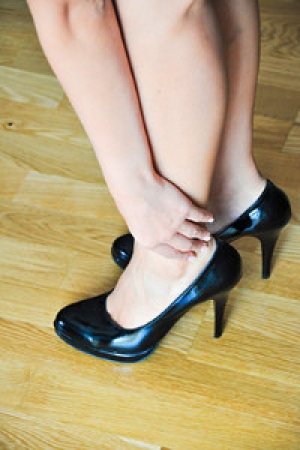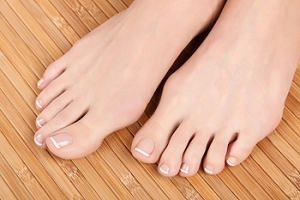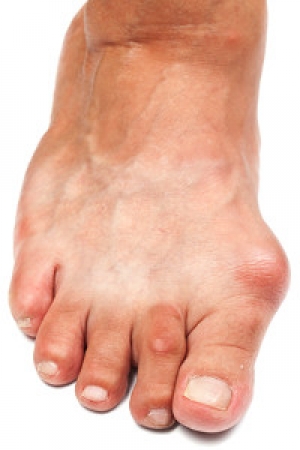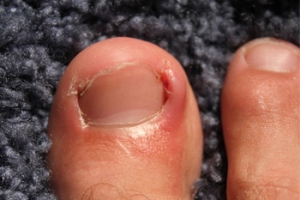Connect With Us
Featured Articles

Pregnancy Foot Pain
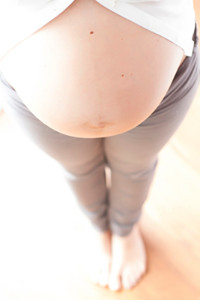 When a woman discovers she is pregnant, there are many changes that normally take place over the next nine months and thereafter. Experiencing foot pain during pregnancy is common, and this can produce discomfort while standing. Swelling may accompany foot pain, which may make it difficult to perform daily tasks. There may be several reasons why foot pain may be apparent during pregnancy, including extra pressure the feet must endure from the additional weight gain, a natural change in posture as a result of the center of gravity shifting in the body, in addition to the blood becoming thicker, possibly causing uncomfortable foot cramps. There may be gentle exercises that can be performed, which may provide the desired relief from pregnancy foot pain. Additionally, drinking plenty of fresh water, limiting salt intake, and eating a balanced diet may aid in the reduction of foot pain that is associated with pregnancy. If you would like additional information about techniques that may avoid foot pain during this time in your life, it is advised to speak with a podiatrist.
When a woman discovers she is pregnant, there are many changes that normally take place over the next nine months and thereafter. Experiencing foot pain during pregnancy is common, and this can produce discomfort while standing. Swelling may accompany foot pain, which may make it difficult to perform daily tasks. There may be several reasons why foot pain may be apparent during pregnancy, including extra pressure the feet must endure from the additional weight gain, a natural change in posture as a result of the center of gravity shifting in the body, in addition to the blood becoming thicker, possibly causing uncomfortable foot cramps. There may be gentle exercises that can be performed, which may provide the desired relief from pregnancy foot pain. Additionally, drinking plenty of fresh water, limiting salt intake, and eating a balanced diet may aid in the reduction of foot pain that is associated with pregnancy. If you would like additional information about techniques that may avoid foot pain during this time in your life, it is advised to speak with a podiatrist.
Pregnant women with swollen feet can be treated with a variety of different methods that are readily available. For more information about other cures for swollen feet during pregnancy, consult with Dr. Thong V. Truong from California. Our doctor will attend to all of your foot and ankle needs.
What Foot Problems Can Arise During Pregnancy?
One problem that can occur is overpronation, which occurs when the arch of the foot flattens and tends to roll inward. This can cause pain and discomfort in your heels while you’re walking or even just standing up, trying to support your baby.
Another problem is edema, or swelling in the extremities. This often affects the feet during pregnancy but tends to occur in the later stages.
How Can I Keep My Feet Healthy During Pregnancy?
- Wearing orthotics can provide extra support for the feet and help distribute weight evenly
- Minimize the amount of time spent walking barefoot
- Wear shoes with good arch support
- Wear shoes that allow for good circulation to the feet
- Elevate feet if you experience swelling
- Massage your feet
- Get regular, light exercise, such as walking, to promote blood circulation to the feet
If you have any questions please feel free to contact our office located in Chico, CA . We offer the newest diagnostic and treatment technologies for all your foot and ankle needs.
Foot Care for Pregnant Women
The natural weight that pregnant women gain causes their center of gravity to be completely altered. This causes them to have a new weight-bearing stance which adds pressure to the knees and feet. As a result, pregnant women often experience severe foot pain. The two most common foot issues experienced by women in their pregnancies are edema and over-pronation. It is important for all pregnant women to learn more about how to take care of their feet so they are more comfortable during their pregnancy.
Over-pronation, which is commonly referred to as flat feet, is caused when a person’s arch flattens out upon weight bearing. This causes the person’s feet to roll inward while walking. Pregnant women often experience this due to the sudden weight they gain.
Edema, also referred as swelling in the feet, typically occurs in the later part of the pregnancy. It is the result of the extra blood accumulated in the pregnant woman’s body. The enlarged uterus puts more pressure on the blood vessels in the pelvis which causes leg circulation to slow down. This causes blood to pool in the lower extremities.
Fortunately, there are ways to treat both edema and over-pronation. Edema can be treated by elevating the foot as often as possible. Wearing proper fitting footwear will also be helpful for those with edema. A treatment method for over-pronation could be orthotics. Orthotic inserts should be designed with appropriate arch support and medial rear foot for your foot.
It is best for pregnant women to buy new shoes during the day, because this is the time where swelling is at its peak. Pregnant women also shouldn’t rush when buying shoes. It is always advised that you make sure your shoes fit properly but this is especially important during pregnancy.
If you are a pregnant woman, you should consult with a podiatrist in order to make sure your feet are healthy throughout the entirety of your pregnancy.
Wearing High Heels May Affect the Ankles
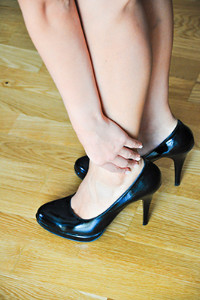 Even though many women enjoy wearing high heels and admire how the foot looks in high heeled shoes, there may be specific foot issues that may develop as a result of wearing this type of shoe. The ankles may become unstable, which may affect the body’s balance, in addition to providing inadequate support while walking. Research has shown that muscles may gradually reduce in length in the back of the leg and they may get longer in the front of the leg. These changes may affect the muscle strength in the leg and may influence overall body stability. If you choose to wear high heels, there may be techniques that can be implemented, which may minimize any injuries that may occur. These may include performing gentle stretching exercises, using resistance bands that may aid in strengthening the leg muscles, and using your toes to pick up small objects, which may help the muscles in the toes to become stronger. If you have questions about the effects high heels can have on your feet, it is suggested to speak with a podiatrist.
Even though many women enjoy wearing high heels and admire how the foot looks in high heeled shoes, there may be specific foot issues that may develop as a result of wearing this type of shoe. The ankles may become unstable, which may affect the body’s balance, in addition to providing inadequate support while walking. Research has shown that muscles may gradually reduce in length in the back of the leg and they may get longer in the front of the leg. These changes may affect the muscle strength in the leg and may influence overall body stability. If you choose to wear high heels, there may be techniques that can be implemented, which may minimize any injuries that may occur. These may include performing gentle stretching exercises, using resistance bands that may aid in strengthening the leg muscles, and using your toes to pick up small objects, which may help the muscles in the toes to become stronger. If you have questions about the effects high heels can have on your feet, it is suggested to speak with a podiatrist.
High heels have a history of causing foot and ankle problems. If you have any concerns about your feet or ankles, contact Dr. Thong V. Truong from California. Our doctor can provide the care you need to keep you pain-free and on your feet.
Effects of High Heels on the Feet
High heels are popular shoes among women because of their many styles and societal appeal. Despite this, high heels can still cause many health problems if worn too frequently.
Which Parts of My Body Will Be Affected by High Heels?
- Ankle Joints
- Achilles Tendon – May shorten and stiffen with prolonged wear
- Balls of the Feet
- Knees – Heels cause the knees to bend constantly, creating stress on them
- Back – They decrease the spine’s ability to absorb shock, which may lead to back pain. The vertebrae of the lower back may compress.
What Kinds of Foot Problems Can Develop from Wearing High Heels?
- Corns
- Calluses
- Hammertoe
- Bunions
- Morton’s Neuroma
- Plantar Fasciitis
How Can I Still Wear High Heels and Maintain Foot Health?
If you want to wear high heeled shoes, make sure that you are not wearing them every day, as this will help prevent long term physical problems. Try wearing thicker heels as opposed to stilettos to distribute weight more evenly across the feet. Always make sure you are wearing the proper shoes for the right occasion, such as sneakers for exercising. If you walk to work, try carrying your heels with you and changing into them once you arrive at work. Adding inserts to your heels can help cushion your feet and absorb shock. Full foot inserts or metatarsal pads are available.
If you have any questions please feel free to contact our office located in Chico, CA . We offer the newest diagnostic and treatment technologies for all your foot and ankle needs.
Effect of High Heels on the Feet
High heels are uncomfortable, but many women sacrifice comfort to be stylish. There are many problems that stem from wearing high heels, however these issues can be avoided by wearing proper shoes.
Heels are bad because they push your weight forward toward the fall of the foot. The higher the heel is, the more weight and pressure get shifted. This process causes the back to hyperextend backwards to counterbalance which may cause pain in the leg, hip, and back. Consequently, major posture problems may occur, and these issues may eventually become permanent.
Wearing high heels is one of the leading cause of ingrown toenails. Heels create a great deal of pressure on the big toenails which disrupts proper toenail growth. This may eventually lead to the big toenail growing into the skin. Another common problem that stems from high heels is bunions. If bunions go untreated, they can cause serious scar tissue to form along with severe pain.
However, there are ways to minimize the harmful risks associated with wearing heels. You should try to massage and stretch your legs and feet after wearing heels for an extended time. Stretching helps prevent the Achilles tendons and calf muscles from becoming too tight. A good substitute for heels are platforms which provide a better surface area to evenly distribute the body’s weight.
If you are experiencing any painful foot conditions from wearing high heels, you should consult with your podiatrist right away.
It Is Important to Take Care of Diabetic Feet
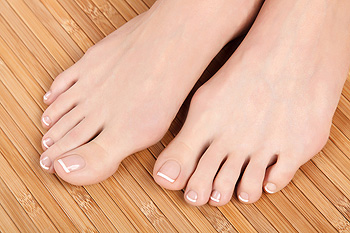 When the sugar levels in the blood become elevated, the medical condition that is known as diabetes may occur. The feet may become affected as a result of this, and proper care must be given, which may avoid uncomfortable and painful foot ailments. These may include diabetic neuropathy, which may make it difficult to feel any wounds or cuts that may be present, or peripheral vascular disease, which may limit blood flow to the feet. Research has shown that foot conditions that are associated with diabetes will benefit from effective treatment methods when implemented. These may include properly taking care of wounds or infections that may have developed, in addition to possibly wearing a boot, which may relieve pressure off the foot. If you are a diabetic patient, it is suggested that you consult with a podiatrist as quickly as possible who can properly monitor this condition, which may affect the feet.
When the sugar levels in the blood become elevated, the medical condition that is known as diabetes may occur. The feet may become affected as a result of this, and proper care must be given, which may avoid uncomfortable and painful foot ailments. These may include diabetic neuropathy, which may make it difficult to feel any wounds or cuts that may be present, or peripheral vascular disease, which may limit blood flow to the feet. Research has shown that foot conditions that are associated with diabetes will benefit from effective treatment methods when implemented. These may include properly taking care of wounds or infections that may have developed, in addition to possibly wearing a boot, which may relieve pressure off the foot. If you are a diabetic patient, it is suggested that you consult with a podiatrist as quickly as possible who can properly monitor this condition, which may affect the feet.
Diabetic foot care is important in preventing foot ailments such as ulcers. If you are suffering from diabetes or have any other concerns about your feet, contact Dr. Thong V. Truong from California. Our doctor can provide the care you need to keep you pain-free and on your feet.
Diabetic Foot Care
Diabetes affects millions of people every year. The condition can damage blood vessels in many parts of the body, especially the feet. Because of this, taking care of your feet is essential if you have diabetes, and having a podiatrist help monitor your foot health is highly recommended.
The Importance of Caring for Your Feet
- Routinely inspect your feet for bruises or sores.
- Wear socks that fit your feet comfortably.
- Wear comfortable shoes that provide adequate support.
Patients with diabetes should have their doctor monitor their blood levels, as blood sugar levels play such a huge role in diabetic care. Monitoring these levels on a regular basis is highly advised.
It is always best to inform your healthcare professional of any concerns you may have regarding your feet, especially for diabetic patients. Early treatment and routine foot examinations are keys to maintaining proper health, especially because severe complications can arise if proper treatment is not applied.
If you have any questions please feel free to contact our office located in Chico, CA . We offer the newest diagnostic and treatment technologies for all your foot and ankle needs.
Diabetic Foot Conditions
According to the American Diabetes Association (ADA), diabetes is a condition that affects approximately 23.6 million Americans. Around 750,000 new cases are diagnosed each year, and the disease’s most common form, Type 2 diabetes, makes up for 90 to 95 percent of these cases. Type 2 diabetes is especially prevalent among older Americans, those who are obese, and those who lead sedentary lifestyles.
Complications of the disease may lead to several foot and ankle-related conditions. The loss of nerve sensation, or neuropathy, can cause diabetics to lose feeling at the bottom of the feet and therefore leave them unaware of pain, pressure, and heat. Decreased circulation is another complication of diabetes that can slow down the healing of wounds and injuries; this can lead to the development of foot ulcers.
To prevent foot ulcers from forming, diabetics should examine their feet every day for small cuts and wear shoes that curtail pressure. Constant monitoring for the risk factors associated with ulcer formation can allow for early detection and therefore lessen the possibility of ulcers or, even worse, amputation. The removal of calluses and ingrown toenails should be left to the podiatrist to avoid improper removal and possible infection.
Diabetic patients may also experience foot deformities due to complications in their feet, such as limited joint mobility, muscle atrophy, and decreased fat padding. These complications can increase pressure in certain areas of the foot, which in turn can cause certain deformities, such as hammertoe, to form. Another deformity, Charcot foot, develops due to the collapsing of microfractures in the bones of the feet. The resulting deformity is a foot that is flattened and wider in appearance.
To help minimize pressure and prevent the development of these diabetes-related foot and ankle conditions, your podiatrist may consider using orthotics or special shoes. Charcot foot may be treated using walkers, custom orthotic insoles, or non-weight-bearing or rigid weight-bearing casts or braces. In more serious cases, surgery may be considered to treat more developed deformities. Ulcers can be further cared for with the help of proper diet, medication to control glucose, intensive wound care, and infection treatment.
Can Bunions Be Prevented?
 If you have a bunion, you may be experiencing uncomfortable foot conditions that may develop as a result of this ailment. The bony area that forms on the side of the big toe may lead to inflamed and callused skin, which may make walking difficult to accomplish, depending on the severity of the bunion. Research has shown the formation of bunions may be caused by genetic traits, in addition to medical conditions that may be present, which may include cerebral palsy or rheumatoid arthritis. Additionally, if you choose to wear shoes that are too tight, a bunion may gradually form, and proper treatment should begin as soon as possible. Bunions may be prevented by wearing shoes that fit correctly, leaving ample room for the toes to freely move about in. If you feel you have developed a bunion, it is suggested to speak with a podiatrist to learn about proper treatment techniques.
If you have a bunion, you may be experiencing uncomfortable foot conditions that may develop as a result of this ailment. The bony area that forms on the side of the big toe may lead to inflamed and callused skin, which may make walking difficult to accomplish, depending on the severity of the bunion. Research has shown the formation of bunions may be caused by genetic traits, in addition to medical conditions that may be present, which may include cerebral palsy or rheumatoid arthritis. Additionally, if you choose to wear shoes that are too tight, a bunion may gradually form, and proper treatment should begin as soon as possible. Bunions may be prevented by wearing shoes that fit correctly, leaving ample room for the toes to freely move about in. If you feel you have developed a bunion, it is suggested to speak with a podiatrist to learn about proper treatment techniques.
If you are suffering from bunion pain, contact Dr. Thong V. Truong of California. Our doctor can provide the care you need to keep you pain-free and on your feet.
What Is a Bunion?
Bunions are painful bony bumps that usually develop on the inside of the foot at the joint of the big toe. As the deformity increases over time, it may become painful to walk and wear shoes. Women are more likely to exacerbate existing bunions since they often wear tight, narrow shoes that shift their toes together. Bunion pain can be relieved by wearing wider shoes with enough room for the toes.
Causes
- Genetics – some people inherit feet that are more prone to bunion development
- Inflammatory Conditions - rheumatoid arthritis and polio may cause bunion development
Symptoms
- Redness and inflammation
- Pain and tenderness
- Callus or corns on the bump
- Restricted motion in the big toe
In order to diagnose your bunion, your podiatrist may ask about your medical history, symptoms, and general health. Your doctor might also order an x-ray to take a closer look at your feet. Nonsurgical treatment options include orthotics, padding, icing, changes in footwear, and medication. If nonsurgical treatments don’t alleviate your bunion pain, surgery may be necessary.
If you have any questions, please feel free to contact our office located in Chico, CA . We offer the newest diagnostic and treatment technologies for all your foot care needs.
What Are Bunions?
Bunions are large bony bumps at the base of the big toe. Medically known as hallux valgus, a bunion is a misalignment of the metatarsophalangeal joint, or big toe joint. The misalignment will generally worsen with time if left untreated.
The exact cause of bunions is unknown, with genetics seen as a potential cause. High heels and poorly-fitted footwear, rheumatoid arthritis, and heredity all seem to be potential factors behind the exacerbation of bunions. Women have been found to be more likely to develop bunions in comparison to men.
Bunions do not always produce symptoms. The best way to tell is if the big toe is pushing up against the next toe and there is a large protrusion at the base of the big toe. You may or may not feel pain. Redness, swelling, and restricted movement of the big toe may be present as well.
Podiatrists use a variety of methods to diagnose bunions. If there are symptoms present, podiatrists will first consider that it is a bunion. If not, a physical examination will be conducted to check function of the big toe. Finally, an X-ray may be taken to view the extent of the bunion and confirm it is a bunion.
Typically, nonsurgical methods are used to treat bunions, unless the bunion has become too misaligned. Orthotics, icing and resting the foot, roomier and better fitted shoes, taping the foot, and pain medication are usually utilized first. If the bunion doesn’t go away or causes extreme pain, surgery may be required. Surgeons will either remove part of the swollen tissue or bone to straighten the toe out.
If you have a bunion, it is recommended to see a podiatrist. The longer it is left untreated, the worse it may get. Podiatrists can properly diagnose and treat a bunion before it gets worse.
How to Care for Your Child's Feet
It is never normal for a child to experience pain in his or her feet. Foot pain that lasts more than a few days and limits a child’s ability to walk should be examined by a podiatrist. Many adult foot ailments originate in childhood and may be present at birth. Common foot issues that are experienced by children are pediatric flat foot, Sever’s disease, ingrown toenails, and plantar warts.
A child’s foot grows rapidly during the first year, allowing it to reach almost half of their adult foot size. Consequently, foot specialists consider the first year to be the most crucial point in the foot development process. There are ways you can help ensure that your child’s foot develops properly. One way is to carefully look at your baby’s feet. If you notice any deformities, you should immediately seek professional care. You should also loosely cover your child’s foot, since tight coverings may prevent movement and inhibit normal development. Another tip is to change the baby’s positioning throughout the day. If your baby lies down in one spot for too long, it may put an excess amount of strain on the feet and legs.
It is best that you try not to force a child to start walking. Children will begin to walk when they are both physically and emotionally capable to do so. You should also avoid comparing your child’s walking progress with other children because the age range for independent walking may range. When your child’s feet begin to develop, you may need to change both their shoe and sock size every few months to allow room for their feet to grow.
Kids are sometimes prone to splinters, cuts, and severe injuries because they tend to walk around barefoot. This also makes them more susceptible to developing plantar warts which is a condition caused by a virus that invades the sole of the foot through breaks in the skin. These ailments can be avoided by making sure your child wears shoes in unsanitary environments. You should also wash any minor cuts or scrapes on your child’s feet. It is a myth that exposure to fresh air will heal injuries; fresh air will only expose your child’s cuts to germs.
As a parent, you should ensure that your child’s feet are developing properly and are being properly maintained. Consequently, it is important that you perform routine inspections on his or her feet to detect any injuries or deformities in their early stages. Early detection and treatment will help to ensure that your child does not develop any serious foot conditions.
Reasons That Ingrown Toenails May Occur
 If you have ever experienced pain and tenderness on the side of your big toe, you may have what is known as an ingrown toenail. This is often the result of the toenail growing into the skin around the nail, and is often accompanied by pain and discomfort. If the toenail is severely ingrown, some of the symptoms experienced may be pus oozing from the area, swelling, or extensive bleeding. It is advised for diabetic patients to seek medical treatment immediately, which will aid in promoting proper healing. There are several causes of ingrown toenails, including wearing shoes and socks that fit too tightly, incurring an injury to the toe, or by having feet that sweat excessively. The latter reason typically allows the nail to cut through the soft skin surrounding it, and implants itself into the skin. If you feel you have an ingrown toenail, please consult with a podiatrist to learn about proper treatment techniques.
If you have ever experienced pain and tenderness on the side of your big toe, you may have what is known as an ingrown toenail. This is often the result of the toenail growing into the skin around the nail, and is often accompanied by pain and discomfort. If the toenail is severely ingrown, some of the symptoms experienced may be pus oozing from the area, swelling, or extensive bleeding. It is advised for diabetic patients to seek medical treatment immediately, which will aid in promoting proper healing. There are several causes of ingrown toenails, including wearing shoes and socks that fit too tightly, incurring an injury to the toe, or by having feet that sweat excessively. The latter reason typically allows the nail to cut through the soft skin surrounding it, and implants itself into the skin. If you feel you have an ingrown toenail, please consult with a podiatrist to learn about proper treatment techniques.
Ingrown toenails can become painful if they are not treated properly. For more information about ingrown toenails, contact Dr. Thong V. Truong of California. Our doctor can provide the care you need to keep you pain-free and on your feet.
Ingrown Toenails
Ingrown toenails occur when a toenail grows sideways into the bed of the nail, causing pain, swelling, and possibly infection.
Causes
- Bacterial infections
- Improper nail cutting such as cutting it too short or not straight across
- Trauma to the toe, such as stubbing, which causes the nail to grow back irregularly
- Ill-fitting shoes that bunch the toes too close together
- Genetic predisposition
Prevention
Because ingrown toenails are not something found outside of shoe-wearing cultures, going barefoot as often as possible will decrease the likeliness of developing ingrown toenails. Wearing proper fitting shoes and using proper cutting techniques will also help decrease your risk of developing ingrown toenails.
Treatment
Ingrown toenails are a very treatable foot condition. In minor cases, soaking the affected area in salt or antibacterial soaps will not only help with the ingrown nail itself, but also help prevent any infections from occurring. In more severe cases, surgery is an option. In either case, speaking to your podiatrist about this condition will help you get a better understanding of specific treatment options that are right for you.
If you have any questions please feel free to contact our office located in Chico, CA . We offer the newest diagnostic and treatment technologies for all your foot and ankle needs.

